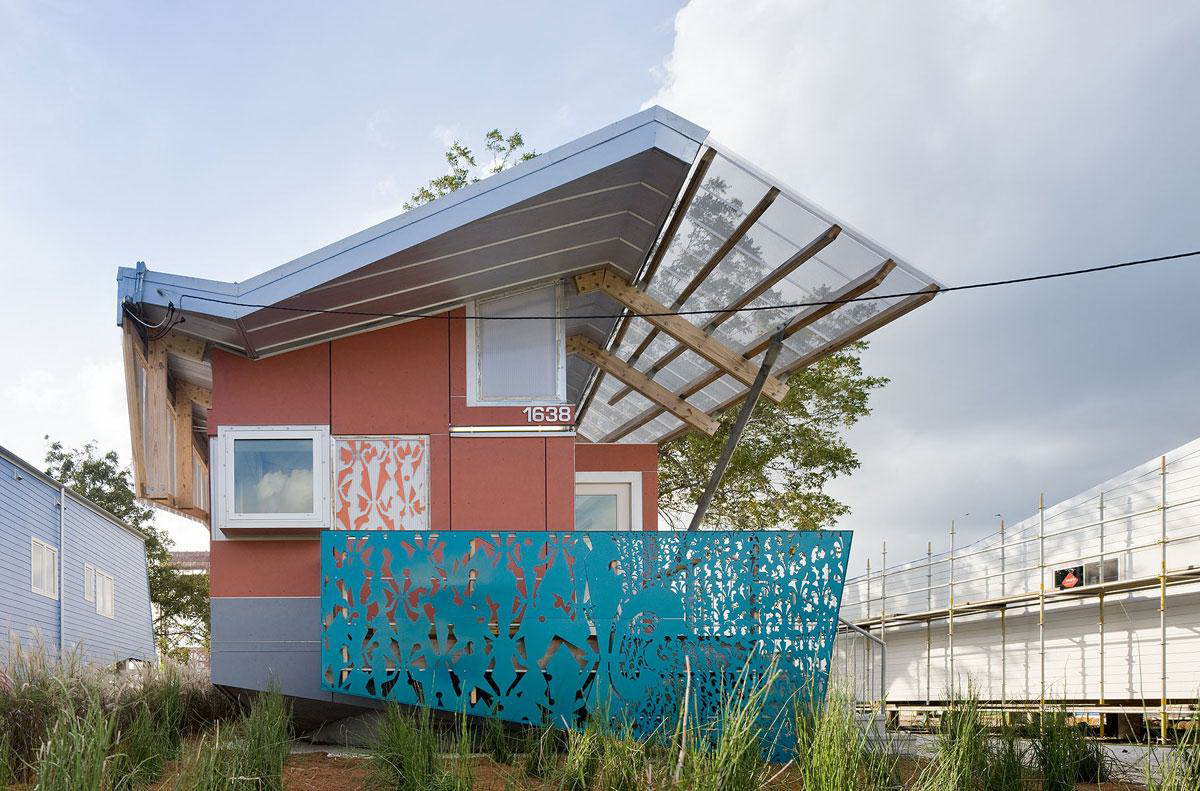#13635. Modern house with contrasting facade and perforated panels

This modern house demonstrates a striking example of experimental facade design, where functionality combines with unconventional visual solutions. The central element of the composition is the contrasting combination of a terracotta-red upper section and a gray lower section. The turquoise perforated panel with an abstract pattern adds particular expressiveness to the facade, serving not only as a decorative element but also creating an interplay of light and shadow.
The architectural solution for the roof deserves special attention – a transparent canopy with wooden structural elements creates a sense of lightness and visually expands the space. The non-standard geometry of the roof with asymmetrical slopes adds dynamism to the entire composition. Windows of various sizes, including a square panoramic window, are organically integrated into the overall structure of the facade, creating an interesting rhythmic pattern.
When designing your own facade, it's worth considering techniques such as using contrasting color combinations, decorative perforated panels that can serve both aesthetic and functional purposes (sun protection, zoning), as well as combining different textures and materials to create depth and expressiveness. The house number (1633), minimally integrated into the facade, demonstrates how functional elements can become part of the overall design solution.